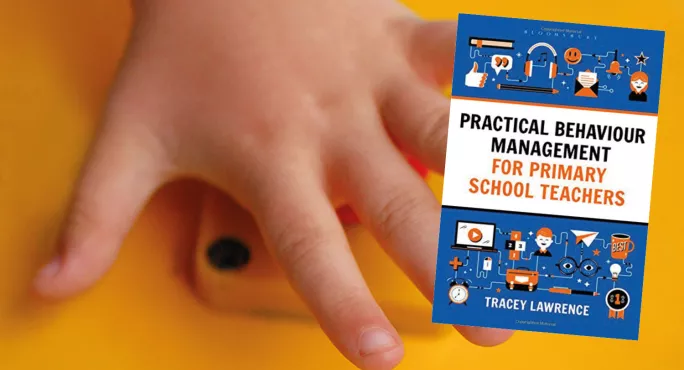- Home
- Book review: Practical Behaviour Management for Primary School Teachers
Book review: Practical Behaviour Management for Primary School Teachers

Behaviourally speaking, I don’t have the easiest class this year, so when I was approached by Tes to review a book entitled Practical Behaviour Management for Primary School Teachers, the answer was an immediate “Yes”.
I should state that I’ve always been sceptical of books that tell teachers how to manage children. Behaviour-management skills aren’t acquired from the pages of a book, but out in the classroom at the sharp end of reality. As such, it was a pleasant surprise to find this book both engaging and useful.
The author, Tracey Lawrence, an assistant headteacher and social, emotional and mental health specialist in a mainstream primary, comes from the standpoint that all behaviour is essentially communication. She doesn’t pretend to be able to solve all your problems instantly. Instead, she painstakingly takes you through a spectrum of the behaviours you are likely to encounter in the classroom. These are then met with practical tips on how to tackle them.
The book is written in a friendly, conversational style that addresses the reader teacher-to-teacher. It explains a variety of strategies in a jargon-free way that is both clear and readable without being patronising.
Lawrence makes it clear that this is not a cover-to-cover read, but a dip-in-and-out guide for time-strapped teachers. Each section describes a type of behaviour that you might encounter, offers step-by-step advice on how to deal with it and backs it up with case studies.
The overriding tone is one of empathy. The insights are patently coming from someone who has experienced all of this herself (most of Lawrence’s case studies are of the types of children I’ve encountered in the classroom). While never losing the link between a child’s emotional wellbeing and their behaviour, she acknowledges that teachers are human, too.
Lawrence tempers her advice never to take extreme behaviour personally by recognising that some children will really “push your buttons”, and it’s OK to swap in with a colleague when a child’s behaviour is testing your ability to remain calm.
Teacher wellbeing
This is probably why she puts so much emphasis on teacher wellbeing, arguing - reasonably enough - that a negative teacher is not best placed to support a child who is struggling with behaviour and self-esteem.
The chapter on this subject is as much about the teacher’s wellbeing as the child’s. It includes lots of simple steps a teacher can take to make sure they keep their own mental health in good shape.
The book delivers well on its promise to provide practical solutions. But I noticed that much of the advice works on the assumption that the teacher always has extra adults to call upon. As a teacher with no teaching assistant or other adult available during lessons, I was struck by the number of times that the teacher is advised to “get your TA to help out by…” or to “signal to another member of staff to step in”.
A prominent theme is that there is no one-size-fits-all remedy. One of Lawrence’s key messages is to identify what works for the individual child using the ABC scheme (antecedent, behaviour, consequence) to look at the triggers of specific behaviour and tackle them one step at a time. Since some behaviours can seem overwhelming and sometimes uncontrollable, this is a helpful reminder that there is always something you could do.
The advice on how to approach and work with parents would be useful for NQTs who are still finding their feet. Since coaching in behaviour management is notoriously patchy in teaching training, there’s a lot of useful advice here that would have really helped me when I was starting out.
Know your limits
As a teacher, it’s refreshing to read a book that acknowledges both how much a teacher can help a child struggling with behavioural issues, and also the times when a teacher’s power is limited. When addressing children with attachment issues, Lawrence reminds you that, in some cases, you must be mindful that this is not a state they can change, but rather “something you can support”.
The final chapter, on assessment, came as something of a surprise. I confess I’d never thought of behaviour as something to assess, but the questionnaires provided are a useful tool for teachers to help all children, not just those who stand out as needing support.
So, has this book changed my approach to behaviour management? Probably not, but it’s made me stop and reflect on how I react to children’s behaviour.
Simply following Lawrence’s strategies might not bring about behaviour nirvana overnight, but what every page of this book does is remind the teacher that behaviour is not about you, it’s about them. It helps you stand back and look at why children might be behaving the way they are, and the ways in which you might act to help them. And that can only be a good thing.
Jo Brighouse is a pseudonym of a primary school teacher in the West Midlands
Keep reading for just £1 per month
You've reached your limit of free articles this month. Subscribe for £1 per month for three months and get:
- Unlimited access to all Tes magazine content
- Exclusive subscriber-only stories
- Award-winning email newsletters



